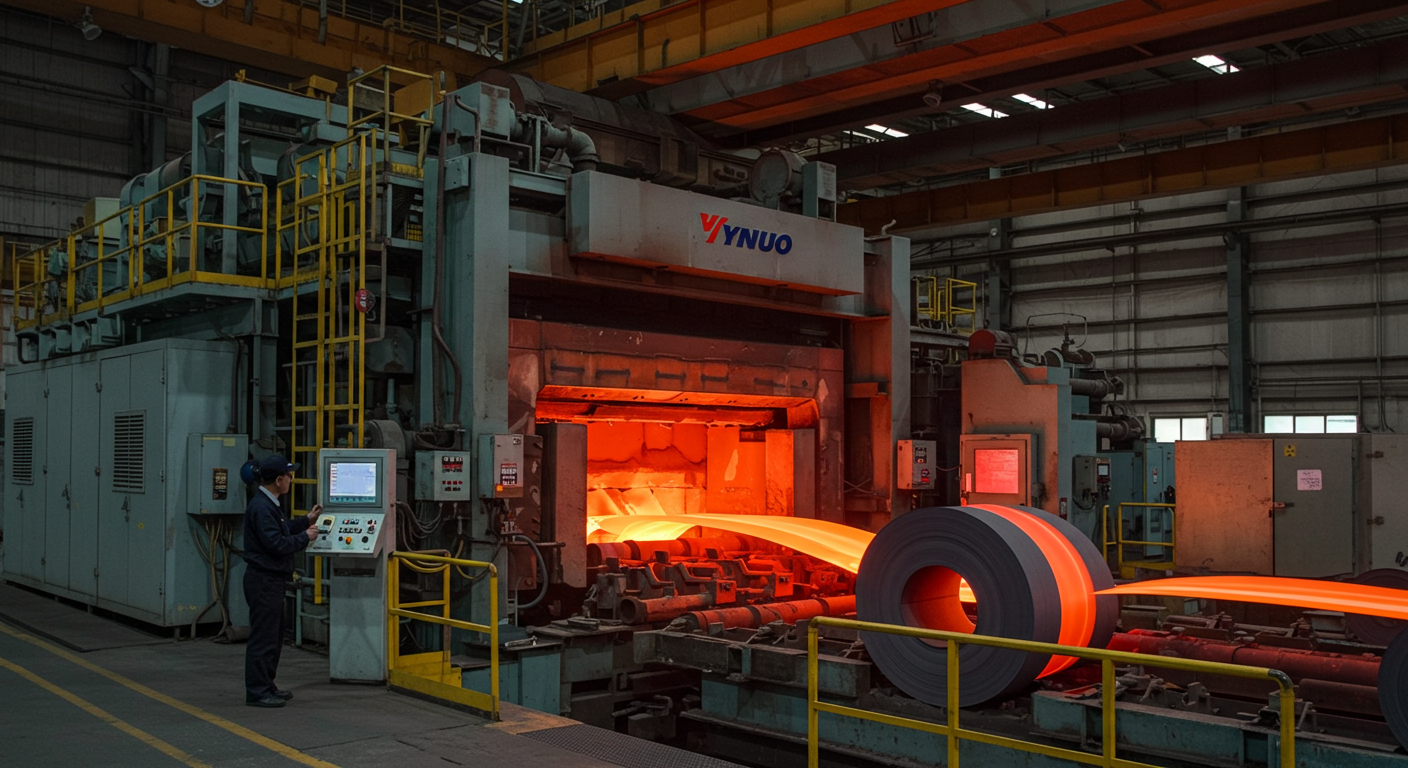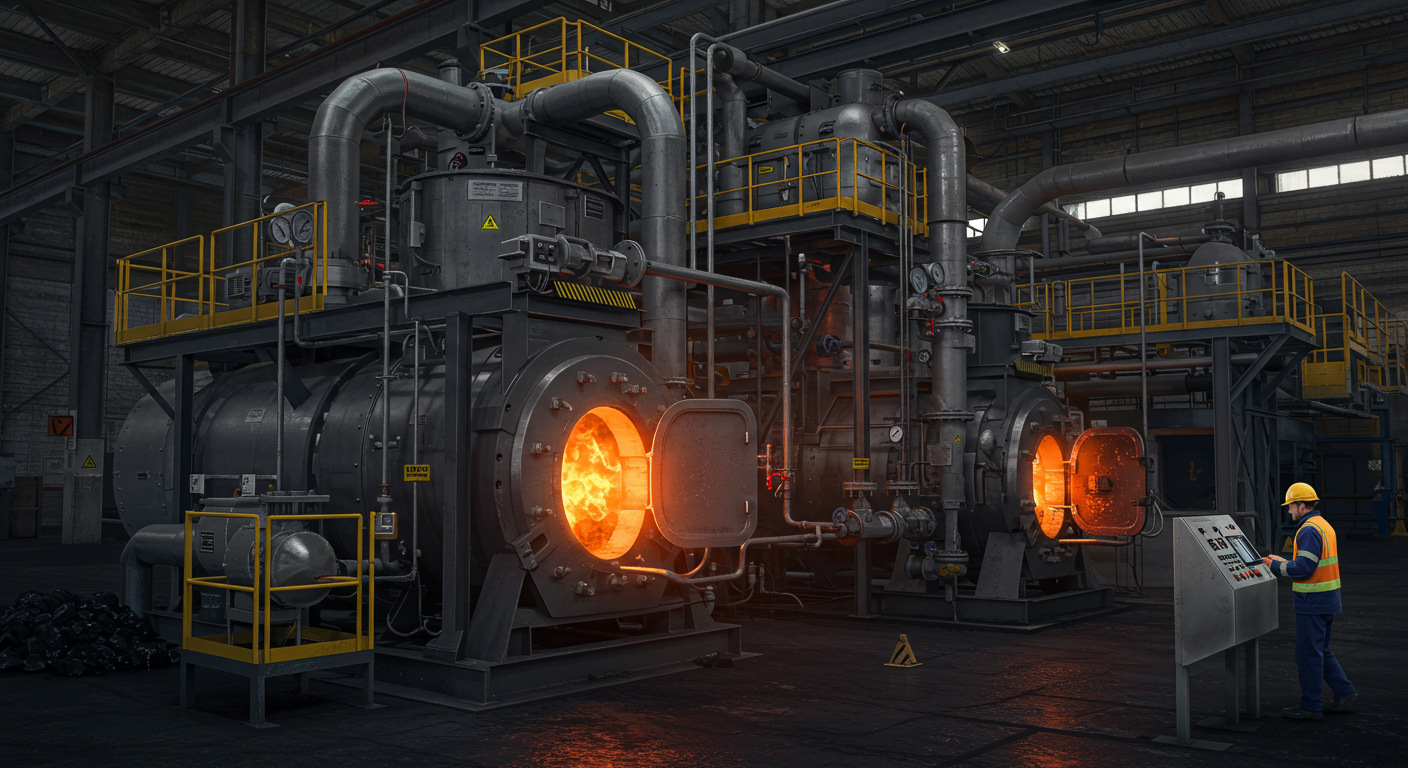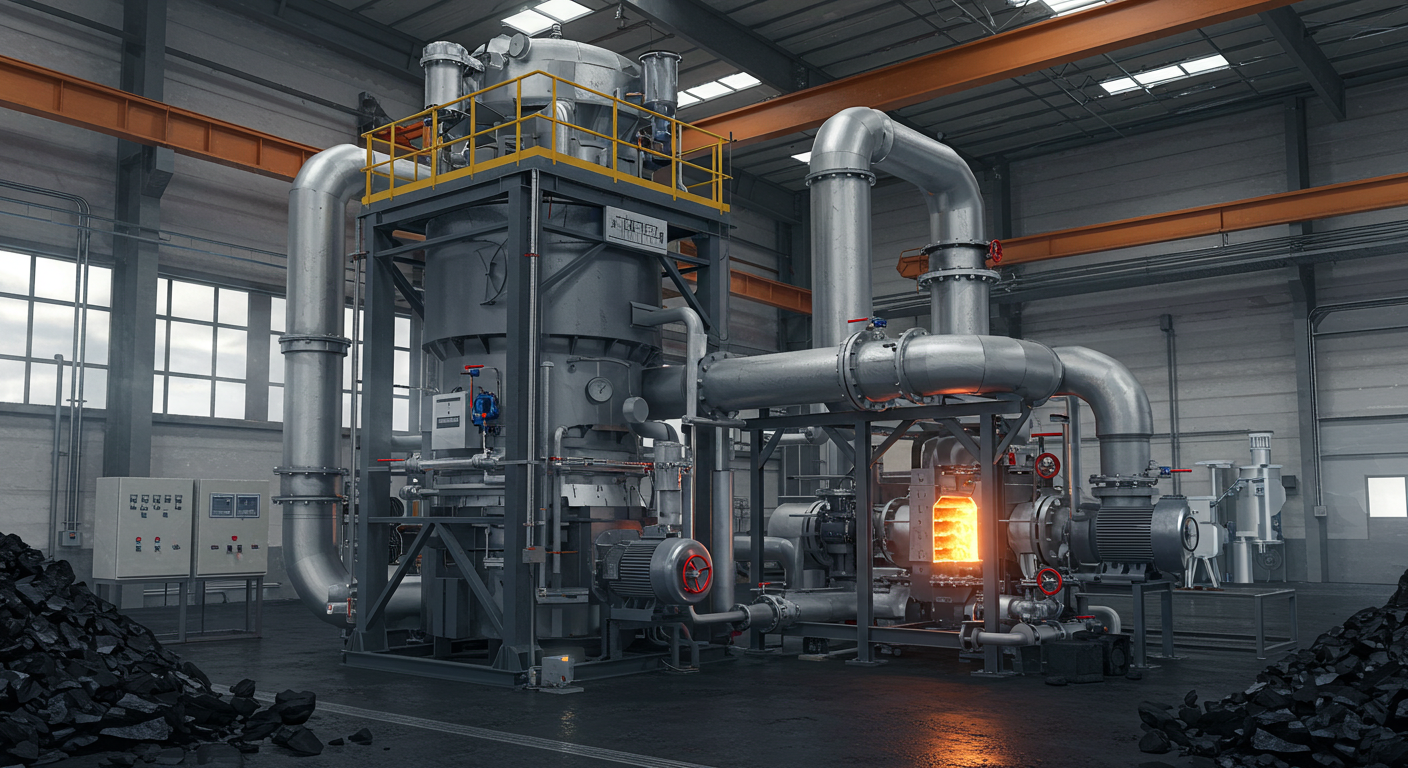
Billet hot rolling preheat furnaces are indispensable in steel manufacturing, heating billets to the precise temperatures required for hot rolling, ensuring malleability and superior product quality. At Jiangsu Yinuo Thermal Energy Technology Co., Ltd., we engineer cutting-edge preheat furnaces that empower steel mills and metal processing industries with unmatched efficiency and precision. These furnaces prepare billets for transformation into rebar, wire rods, or structural shapes, supporting critical applications in infrastructure, construction, and industrial sectors.
This guide delves into the technology, applications, and maintenance strategies for billet hot rolling preheat furnaces, offering actionable insights for engineers, technicians, and industry professionals. With over 13 years of expertise and multiple patented innovations, Yinuo leads the industry in delivering reliable, high-performance solutions. We’ll also explore emerging trends shaping the future of these furnaces. Discover our advanced furnace solutions at Our Products and learn how Yinuo is revolutionizing steel processing.
What Is a Billet Hot Rolling Preheat Furnace?
A billet hot rolling preheat furnace is an industrial furnace designed to heat steel billets—semi-finished metal bars—to rolling temperatures, typically between 1150°C and 1250°C, enabling them to be shaped into products like rebar, wire rods, or structural beams. These furnaces are a cornerstone of steel mills, where achieving uniform billet temperature is essential for ensuring high-quality rolling outcomes and maximizing yield.
Yinuo’s preheat furnaces are available in several configurations, including pusher-type, walking beam, and rotary hearth designs. Pusher-type furnaces move billets through sequential heating zones, making them ideal for high-volume production. Walking beam furnaces use a lifting mechanism to ensure even heating, particularly for heavy or long billets, while rotary hearth furnaces rotate billets for consistent heat exposure. Heating sources include gas-fired burners, electric elements, or induction systems, each tailored to specific operational needs. Gas-fired furnaces offer cost efficiency, while electric or induction systems provide precision, as detailed in our Gas-Fired Furnace Guide. To explore our furnace offerings, visit Our Furnace Products.
How Billet Hot Rolling Preheat Furnaces Work
The preheating process begins by charging billets into the furnace, heating them to 1150–1250°C, and discharging them for rolling. Billets may enter at ambient temperature or up to 800°C from continuous casting, passing through preheating, heating, and soaking zones. The preheating zone uses exhaust gases for energy efficiency, the heating zone employs burners or elements to reach peak temperatures, and the soaking zone ensures uniform temperature distribution across the billet.
Yinuo’s furnaces incorporate advanced control systems for optimal performance. Thermocouples monitor temperature across zones, and programmable logic controllers (PLCs) automate heating rates and billet pacing. Pusher furnaces mechanically push billets forward, walking beam furnaces lift and advance them to avoid surface damage, and rotary hearth furnaces rotate billets for even heating. Gas-fired furnaces utilize burners, often enhanced with regenerative technology to reduce fuel consumption, as discussed in our Regenerative Burner Technology Guide. Electric furnaces rely on silicon carbide or molybdenum disilicide elements for precise heating, while induction furnaces heat billets directly via electromagnetic fields, minimizing oxide scale formation. Atmosphere control, using nitrogen or reducing gases, prevents excessive oxidation, as outlined in our Atmosphere-Controlled Furnaces Guide. Regular maintenance, such as burner cleaning and sensor calibration, ensures consistent operation. For customized furnace solutions, reach out at Contact Us.
Types of Billet Hot Rolling Preheat Furnaces
Billet hot rolling preheat furnaces vary by design, heating method, and application, each optimized for specific production requirements:
Pusher-Type Furnaces
These furnaces push billets through heating zones using hydraulic or mechanical pushers, ideal for high-throughput steel mills. They are cost-effective but may cause skid marks on billets, requiring careful design.
Walking Beam Furnaces
Walking beam furnaces lift and move billets via a beam mechanism, ensuring uniform heating without skid marks, making them suitable for heavy or long billets. Electric-powered beams reduce emissions.
Rotary Hearth Furnaces
These furnaces rotate billets on a circular hearth, providing consistent heating for smaller or round billets, with burners arranged radially for efficiency.
Gas-Fired Furnaces
Gas-fired furnaces use natural gas or propane burners, offering cost efficiency for large-scale operations. Yinuo’s models incorporate regenerative burners to enhance fuel savings, as explored in our Gas-Fired Furnace Guide.
Electric Furnaces
Electric furnaces employ silicon carbide or molybdenum disilicide heating elements, providing precise temperature control and reducing oxide scale, ideal for high-quality rolling with renewable energy integration.
Induction Furnaces
Induction furnaces heat billets rapidly through electromagnetic induction, minimizing scale and improving energy efficiency, as detailed in our Heat Treatment Solutions Guide.
Yinuo’s furnaces are engineered for reliability and performance across these types. Explore our offerings at Our Furnace Products.
Applications of Billet Hot Rolling Preheat Furnaces
Billet hot rolling preheat furnaces serve critical roles in various industries, enabling the production of high-quality steel products:
Steel Manufacturing
These furnaces preheat billets for rolling into rebar, wire rods, or structural sections used in construction, automotive, and machinery. Uniform heating ensures consistent mechanical properties, as covered in our Steel Processing Furnaces Guide.
Infrastructure Projects
Billets are rolled into high-strength steel for bridges, railways, and skyscrapers, requiring precise preheating to achieve structural integrity and durability for large-scale projects.
Automotive Industry
Preheat furnaces prepare billets for rolling into components like engine parts, axles, or chassis frames, where formability and strength are essential for vehicle performance.
Aerospace and Heavy Machinery
Specialty steel alloys for aerospace structural components or heavy machinery parts are preheated to ensure defect-free rolling, often requiring controlled atmospheres to maintain material purity.
Custom Metal Fabrication
Smaller steel mills or fabricators use preheat furnaces to produce tailored sections or profiles, benefiting from flexible furnace designs like rotary hearth systems.
For industry-specific furnace solutions and support, visit Our Services.
Benefits of Billet Hot Rolling Preheat Furnaces
Billet hot rolling preheat furnaces offer significant advantages, making them essential for steel production:
Uniform Material Preparation
Achieving 1150–1250°C ensures billets are uniformly malleable, improving rolling yield and product quality.
High Productivity
Continuous furnace designs, like pusher or walking beam systems, support high-throughput production, minimizing downtime in steel mills.
Energy Efficiency
Regenerative burners and induction heating reduce fuel or electricity consumption by up to 50%, aligning with industry standards for sustainability.
Enhanced Product Quality
Precise temperature control minimizes oxide scale formation, resulting in smoother surfaces and fewer downstream processing steps.
Versatility
Furnaces accommodate various billet sizes, shapes, and alloys, from carbon steel to specialty grades like stainless or titanium.
Advanced Automation
PLC-based control systems reduce human error, ensuring consistent heating and efficient operation.
Yinuo’s preheat furnaces are designed to maximize these benefits, delivering reliable performance for demanding applications. Discover our solutions at Our Furnace Products.
Common Challenges with Billet Hot Rolling Preheat Furnaces
Despite their critical role, billet hot rolling preheat furnaces face several challenges that can impact performance if not addressed:
Temperature Inconsistency
Faulty thermocouples or uneven burner distribution can lead to non-uniform billet heating, compromising rolling quality. Regular calibration and zone adjustments are necessary to maintain consistency.
Oxide Scale Formation
High oxygen levels in the furnace atmosphere cause excessive scale, increasing material loss and downstream cleaning costs. Controlled atmospheres, such as nitrogen or reducing gases, mitigate this issue, as discussed in our Atmosphere-Controlled Furnaces Guide.
High Energy Costs
Gas-fired furnaces consume significant fuel, while electric or induction furnaces require substantial electricity. Energy-efficient technologies like regenerative burners help offset these costs.
Component Wear
Burners, skids, rollers, or walking beam mechanisms experience wear from high temperatures and heavy loads, necessitating routine maintenance to prevent downtime.
Billet Skew or Misalignment
Improper billet movement, particularly in pusher furnaces, can cause skewing, leading to uneven heating or equipment strain. Advanced conveyor systems and alignment controls address this.
Environmental Emissions
Gas-fired furnaces emit CO2 and other gases, posing environmental challenges. Electric or induction furnaces and cleaner fuels offer lower-emission alternatives.
Yinuo’s innovative furnace designs and maintenance services address these challenges effectively, ensuring optimal operation. Learn more about our support offerings at Our Services.
Maintenance Strategies for Billet Hot Rolling Preheat Furnaces
Proper maintenance is critical to ensuring the longevity and efficiency of billet hot rolling preheat furnaces. Yinuo’s furnaces are built for durability, but implementing these strategies maximizes performance:
Regular Inspections
Conduct thorough inspections every 1,000 operating hours or as recommended by Yinuo’s guidelines. Check burners, thermocouples, skids, and walking beam mechanisms for signs of wear or damage. Inspect refractory linings and insulation for cracks or degradation to maintain thermal efficiency.
Atmosphere System Maintenance
For furnaces with controlled atmospheres, regularly test gas delivery systems for leaks and monitor gas purity to prevent oxidation. Calibrate flow meters monthly to ensure accurate gas composition, such as nitrogen or hydrogen blends, which protect billet surfaces.
Burner and Heating System Care
For gas-fired furnaces, clean burner nozzles biweekly to prevent clogging and ensure efficient combustion. Calibrate regenerative burners to optimize fuel savings, as outlined in our Regenerative Burner Technology Guide. For electric furnaces, inspect silicon carbide or molybdenum disilicide heating elements for corrosion or cracking, replacing them as needed. Induction furnaces require checks on coil insulation and cooling systems to prevent overheating.
Temperature Calibration
Verify temperature uniformity across preheating, heating, and soaking zones using thermocouples. Adjust PLC settings to maintain precise heating profiles tailored to billet specifications. Test temperature gradients bi-monthly to ensure billets reach 1150–1250°C consistently.
Component Cleaning
Remove oxide scale, ash, or debris from the furnace chamber weekly to prevent buildup that could affect heat transfer or contaminate billets. Clean conveyor rollers, skids, or walking beam surfaces to ensure smooth billet movement and avoid misalignment.
Fan and Motor Maintenance
Inspect air circulation fans and blowers for wear, as they are critical for maintaining even heat distribution. Lubricate motor bearings and check drive systems quarterly to prevent mechanical failures that could disrupt furnace operation.
Scheduled Downtime
Plan maintenance during low-production periods to minimize operational disruptions. Maintain detailed logs of inspection results, component replacements, and calibration data to track furnace health and anticipate future needs.
For professional maintenance support, Yinuo offers comprehensive services to keep your furnaces running at peak performance. Explore our expertise at Our Services.
Optimizing Billet Hot Rolling Preheat Furnace Performance
To enhance furnace efficiency and output, consider these optimization strategies:
Energy Efficiency
Incorporate regenerative burners to recover waste heat, reducing fuel consumption by 30–50%, as detailed in our Gas-Fired Furnace Guide. For electric or induction furnaces, integrate variable frequency drives (VFDs) to optimize power usage during variable load conditions.
Automation and Control
Implement PLC-based Supervisory Control and Data Acquisition (SCADA) systems for real-time monitoring of temperature, gas flow, and billet pacing. These systems reduce human error and improve heating consistency, ensuring billets are uniformly prepared for rolling.
Atmosphere Optimization
Fine-tune atmosphere compositions, such as nitrogen-hydrogen blends, to minimize oxide scale formation while optimizing gas usage. This reduces material loss and downstream processing costs, as discussed in our Atmosphere-Controlled Furnaces Guide.
Process Tuning
Adjust heating zone profiles and soaking times based on billet size, alloy type, and rolling requirements. For example, larger billets may require extended soaking to ensure core temperature uniformity, while smaller billets benefit from faster cycles to boost throughput.
Component Upgrades
Replace outdated burners, thermocouples, or conveyor systems with Yinuo’s advanced components, designed for enhanced durability and efficiency. Upgraded systems improve heat transfer and reduce maintenance frequency, available at Our Furnace Products.
Operator Training
Train furnace operators and maintenance staff on best practices for temperature control, burner calibration, and troubleshooting. Yinuo offers customized training programs to ensure optimal furnace operation, detailed in Our Services.
By implementing these strategies, steel mills can achieve higher productivity, lower operating costs, and improved product quality, positioning them for long-term success.
Choosing the Right Billet Hot Rolling Preheat Furnace
Selecting the appropriate furnace depends on several factors tailored to your production needs:
Billet Size and Type
Large or heavy billets require walking beam furnaces to prevent surface damage, while smaller billets suit pusher or rotary hearth designs. Alloy composition, such as carbon steel or stainless, influences heating requirements.
Production Volume
High-throughput steel mills benefit from continuous pusher or walking beam furnaces, while smaller operations may opt for rotary hearth systems for flexibility.
Heating Source
Gas-fired furnaces are cost-effective for large-scale production, especially with regenerative burners. Electric furnaces offer precision and reduced emissions, while induction furnaces minimize scale, ideal for high-value alloys.
Environmental Considerations
Electric or induction furnaces align with sustainability goals by reducing CO2 emissions, while gas-fired systems with low-emission burners meet stricter regulations.
Budget and Operating Costs
Balance initial investment with long-term energy and maintenance costs. Regenerative gas-fired or induction furnaces offer efficiency to offset higher upfront costs.
Yinuo’s range of billet hot rolling preheat furnaces is designed to meet these diverse requirements, ensuring optimal performance for any application. Explore our solutions at Our Furnace Products or consult our expert team for personalized recommendations at Contact Us.
Future Trends in Billet Hot Rolling Preheat Furnace Technology
The future of billet hot rolling preheat furnaces is shaped by innovation, sustainability, and efficiency, with Yinuo at the forefront of these advancements:
Advanced Automation
Integration of Internet of Things (IoT) sensors and SCADA systems enables real-time monitoring and predictive control, optimizing temperature profiles and reducing energy waste. Automated billet tracking improves pacing accuracy, enhancing throughput.
Sustainable Heating Technologies
Hydrogen-based burners and fully electric furnaces are emerging as low-carbon alternatives, reducing CO2 emissions by up to 90% compared to traditional gas-fired systems. Yinuo is exploring hybrid systems combining induction and hydrogen for maximum efficiency.
Compact and Modular Designs
Smaller, modular furnaces are being developed for regional steel mills or specialized applications, offering scalability and reduced installation costs without sacrificing performance.
Smart Maintenance Systems
Predictive maintenance powered by artificial intelligence (AI) analyzes sensor data to forecast component wear, scheduling repairs before failures occur. This minimizes downtime and extends furnace life.
Enhanced Energy Efficiency
Next-generation regenerative burners and heat recovery systems are pushing fuel savings beyond 50%, while advanced insulation materials reduce heat loss, aligning with global sustainability goals.
Digital Twin Technology
Virtual models of furnaces simulate heating processes, allowing engineers to optimize designs and troubleshoot issues remotely, improving operational reliability.
Yinuo’s commitment to innovation ensures our furnaces incorporate these trends, delivering cutting-edge performance for steel manufacturers worldwide. Stay ahead of the curve with our advanced solutions, available at Our Furnace Products.
Conclusion
Billet hot rolling preheat furnaces are the backbone of steel manufacturing, enabling the production of high-quality rebar, wire rods, and structural sections for construction, automotive, and aerospace applications. Jiangsu Yinuo Thermal Energy Technology Co., Ltd. leverages over 13 years of expertise and patented technologies to deliver state-of-the-art furnaces, from pusher-type to induction systems, tailored to meet diverse production needs. Effective maintenance strategies, including regular inspections, burner calibration, and atmosphere control, ensure long-term reliability and efficiency. Optimization techniques, such as regenerative burners and automation, enhance performance, while emerging trends like hydrogen heating and AI-driven maintenance promise a sustainable, high-tech future.
Explore Yinuo’s billet hot rolling preheat furnaces and elevate your steel production capabilities at Our Furnace Products. For customized solutions, maintenance support, or expert consultation, visit Our Services or reach out to our team at Contact Us. With Yinuo’s innovative furnaces, your operations are powered by precision, efficiency, and forward-thinking technology.
FAQ
What types of billets can be processed in these furnaces?
Steel, aluminum, and copper billets are commonly processed, tailored for rolling into rebar, wire rods, or sections.
How do gas-fired and electric preheat furnaces compare?
Gas-fired furnaces are cost-effective for high-volume production, while electric furnaces reduce oxide scale and emissions, ideal for precision rolling.
How often should a billet hot rolling preheat furnace be maintained?
Inspect every 1,000 operating hours, focusing on burners, thermocouples, and atmosphere systems, as recommended in our Heat Treatment Solutions Guide.
What are the best ways to improve energy efficiency in these furnaces?
Incorporate regenerative burners and optimize atmosphere control, as detailed in our Regenerative Burner Technology Guide.
How can I select the right preheat furnace for my steel mill?
Consider billet size, production volume, and sustainability goals. Contact Yinuo’s experts for personalized guidance at Contact Us.







